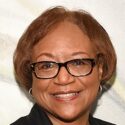 Four years ago the University of Virginia ended its binding early decision program. One of the factors leading to the decision was the concern that Black and other minority students were reluctant to enter the early decision pool because if accepted, and therefore required to enroll, they would lose leverage in seeking the best possible financial aid package for their family.
Four years ago the University of Virginia ended its binding early decision program. One of the factors leading to the decision was the concern that Black and other minority students were reluctant to enter the early decision pool because if accepted, and therefore required to enroll, they would lose leverage in seeking the best possible financial aid package for their family.
This year, the University of Virginia reinstituted an early admissions program. But the new program is not binding. Students who applied early will receive notification by January 31. But if accepted, they are not required to enroll.
The results show a dramatic increase in minority student participation in early admissions. The University of Virginia reports that the 11,417 early applicants form a more diverse group that the last early decision applicant pool in 2007. However, this year’s early action pool of applicants is still not as diverse as the overall applicant pool from a year ago.
In 2007, 70 Black students applied for early decision at the University of Virginia. This year there were 390 Black students who applied early.
Blacks make up 8.1 percent of the current first-year class at the University of Virginia.
Harvard University, which also did away with its early decision program four years ago, has reinstituted a non-binding early action admissions program. Harvard received 4,245 early applications and 9 percent came from African Americans. This is an increase by almost two thirds compared to the percentage of black applicants in the early decision pool four years ago.












